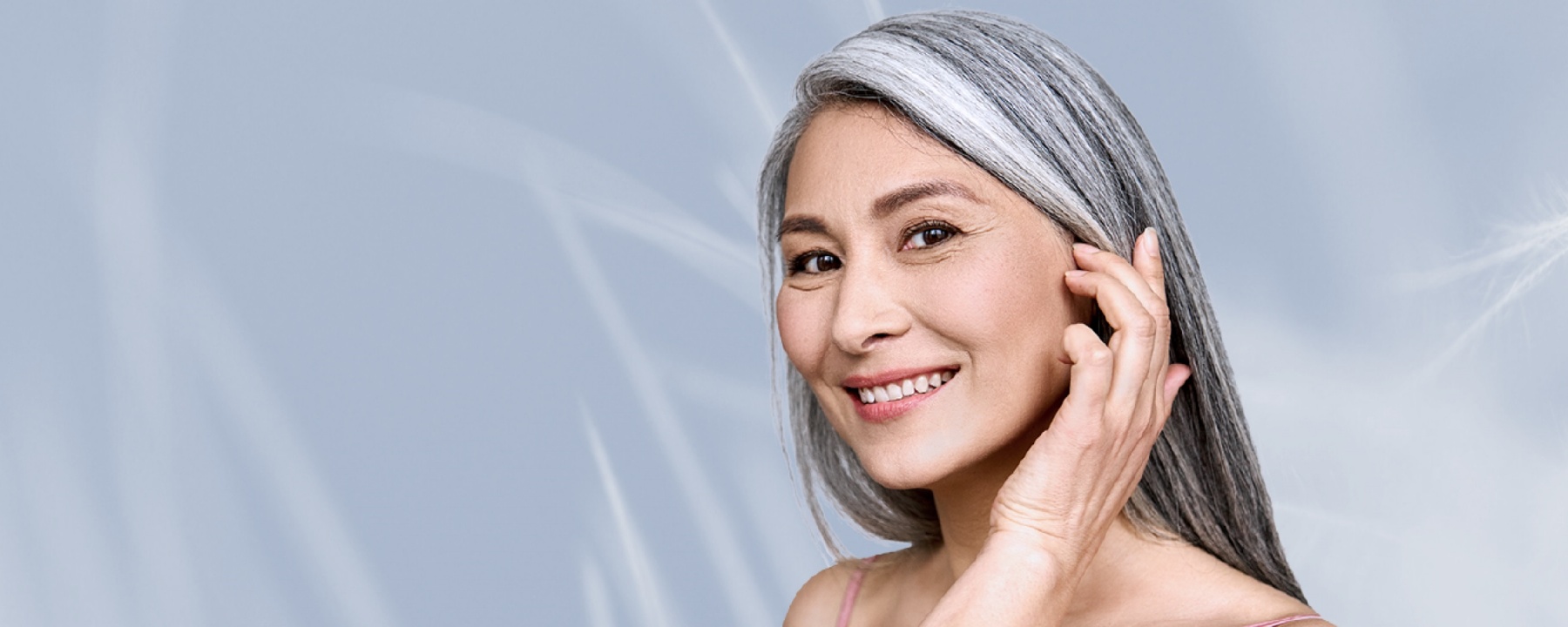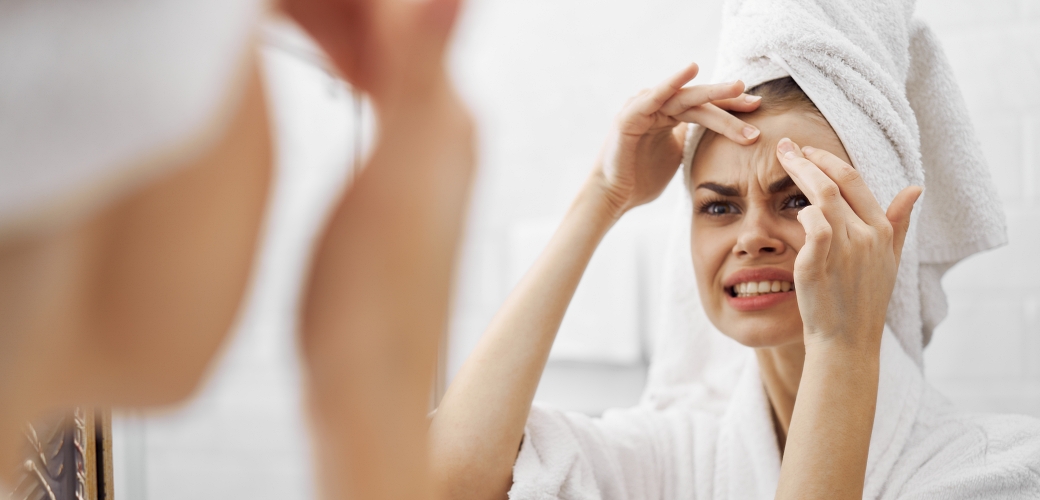
Trends & research
Dermocosmetics – more than a trend
There is a wide range of products in the cosmetics world. Many trends are conquering the market, with consumer wishes and needs constantly growing. The same goes for the challenges faced by formulators and manufacturers. Dermocosmetics is a very strong trend. And the inspiration comes from the interaction with medicine.
A good appearance and health usually go hand in hand. Sometimes it is the decorative cosmetics that make you look good AND healthy. Seriously, who hasn't felt stressed when taking a last quick glance in the mirror? There's a gross pimple on your face. The taxi is already waiting, the table at the restaurant is set, and then you find this ugly little flaw on your skin. Still, a little makeup and nobody will be any the wiser. The problem is covered – but it isn't solved.
This is where nourishing cosmetics come into play. They keep your skin hydrated, help keep the skin barrier intact, and make your skin feel clean and pure and look healthy. Proper, careful care and cleaning is the basis for healthy, good-looking skin. By the way: you will have to live without promises such as "healing" or "anti-inflammatory" when buying such products. This kind of promise is not permitted for cosmetic products.
Let’s return to the nasty pimple. Blackheads, usually the precursors of pimples, as they are also visible in acne, have nothing to do with a lack of cleanliness. Blackheads occur when callus formation, flaking and/or sebum formation processes are disrupted and "pores" become blocked.
Blackheads are black in color not because of dirt, but due to melanin (known from skin tans), which may be present in the plug. Acne is an inflammatory disease of the sebaceous glands and hair follicles. We should not assume poor care when this is not the case.
The psyche also comes into play
As our largest organ, the skin can withstand a lot due to its structure, protecting itself and us. Nevertheless, some support, care and prevention are needed to get through life with healthy skin. Skin problems in general are not a question of age or gender. We all struggle with skin concerns. Some more, others less. In some, they take the form of visible changes in the face caused by natural aging.
This is noticeable from around 25 years of age. In some cases it is due to lifestyle and the resulting environmental influences, such as air pollution, UV exposure or extreme temperatures that can cause massive damage to skin. There are also genetic predispositions to skin diseases, such as atopic dermatitis (eczema) and psoriasis (dandruff). The eye area, too, shouldn't be overlooked. Fatigue, stress and an unhealthy lifestyle are visible here first and foremost. Depending on how pronounced these problems are, it will be difficult to look good AND healthy. In many cases, the psyche also comes into play, as the visible signs of skin problems can also affect self-confidence.
People with sensitive skin in particular are familiar with problems such as redness, rashes, dryness and general skin complaints such as tightness, tingling or itching. "Normal" cosmetic products may no longer be able to help in these cases or may even cause intolerance.
And now it’s time for dermocosmetics. The expertise and experience from cosmetics form a strong connection with the knowledge from medicine and dermatology. Although dermocosmetic products are still cosmetics and therefore cannot be treated or considered as a pharmaceutical or medicinal product, the medical influence is clear. Dermocosmetics go beyond the effects and use of standard cosmetics.
In conversation
An interesting interview with our colleague Lucilene Veira Nunes on the subject of "Dermocosmetics" can be found in COSSMA here.
To define the term in more detail, let us quote from the guidelines of GD Society for Dermopharmacy e. V.:
"The Society for Dermopharmacy has defined dermocosmetics as cosmetic products in which the cosmetic purpose is achieved, taking into account dermatological and pharmaceutical aspects. Because such cosmetic products are also used by people with pre-damaged or diseased skin, they should meet certain requirements with regard to their quality and documentation, some of which go beyond the legal requirements."-
Guidelines of GD Society for Dermopharmacy e. V.
But with all the information you can find about dermocosmetics, the impression must not be created that the regulations or authorization requirements for "standard" cosmetic products are weaker or more open than for dermocosmetic products. Cosmetic products undergo a whole series of tests before they land on the shelf. For example, the active ingredients contained in the cream, which are responsible for the advertised effects, are scientifically tested and checked for effectiveness. A comprehensive safety assessment is mandatory for every retail product. This ensures the highest level of protection for human health.
The health factor plays a major role in the use of dermocosmetics. Proven efficacy and safety are a priority. However, in contrast to a pharmaceutical product, it is "only" a kind of accompanying measure to alleviate cosmetic skin problems such as dry skin, as well as to support prevention, e.g. by maintaining the skin barrier. This is on top of the pleasant sensory effect that customers are accustomed to from their favorite products. The pharmaceutical product, on the other hand, is used and prescribed as part of medical treatment and therapy. In this case, the dosages of the active ingredients may also be higher or different active ingredients may be used than with the cosmetic agents.
Incidentally, for BASF the field of dermatological research and development is not a new trend or new territory. BASF researchers work intensively on the development of particularly skin-friendly ingredients and formulations. Mild surfactants are developed for skin cleansing, and cosmetic oils (emollients) are examined for their properties of causing blackheads (comedogenicity).
And they are convinced, for example, that the skin’s microbiome is one of the most exciting and promising areas of dermatological research. Prebiotics are developed and studied to reduce neurodermatitis, as are probiotic formulations against skin impurities.
BASF has therefore set up an innovation platform with the aim of developing special solutions that can specifically support the function of the microbiome . However, it is not only the active ingredients that can have an impact on the skin microbiome – a finished cosmetic contains more, such as the oils (emollients) that can make the skin supple and have an impact on the sensory effect. These ingredients (Galenics) are also being investigated.
If you are not entirely sure about the exact nature and extent of your skin problems, it is advisable to discuss a course of action with your GP or dermatologist before deciding on a dermocosmetic product. Many products are available in pharmacies. The following shouldn't be underestimated either: Pay attention to and listen to your skin. In most cases, you already know what's good for you.
Ultimately, skin care is important and dermocosmetics can help you look good AND healthy. And some wrinkles are simply part of life – and tell a lot of stories.
The rise of dermocosmetics
Challenging formulations to address skin issue. Consumers are looking for holistic products that will improve their specific skin problems in a safe, efficient and comfortable way.
Mehr Informationen

